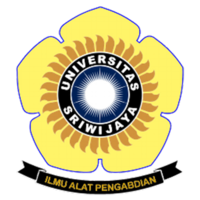The Role Of The Mangrove Forest In Water Terestric Ecosystem As A Disease Control Of Dengue Hemorrhagic Fever (Dhf) Under Global Warming Scenario
Abstract
Recently water terrestrial ecosystem had decreased as consequence for
economic needs. It’s been worried that it can caused many disease including
dengue fever, this pessimism is increased related to the global warming that
happens recently. This research’s goal is to find out the role of mangrove forest in
water terrestric ecosystem as DHF controllers in the scenario of global warming.
This research was held in Lampung Province, Inventary Laboratorium and forest
mapping of Lampung University on January - February 2019. Analysis is using
double linear regression model. The variable Response (Y) is IR dengue fever per
district /city, and the independent variables are changing land terrestric
water ecosystems (water bodies, rice fields, ponds and mangroves), primary
forest, secondary forest, bushes, housing, opened land, dry with bushes land,
healthy houses, population density and climate change (temperature and rainfall).
Land changing data wa s t ak e n from satellite images o f t h e r e co r d in
2009, 2012 and 2015, DHF incidence data and the proportion of healthy houses
proportion wich the acquisition was done by Health Departement, population
density data that was from BPS Lampung Province acquisition, and temperature
and rainfall data were acquired from BMKG Lampung Province. Optimization of
model parameters using the accuracy level of 1 - 5%. Conclusion: mangroves
forrest can pressed down dengue fever incidents for real, global warming can be
prevented by reforestation of mangrove forests as 0.41 - 0.53% per district /
city (that has beach area).
Full Text:
PDFArticle Metrics
Abstract view : 111 timesPDF - 168 times
Refbacks
- There are currently no refbacks.
